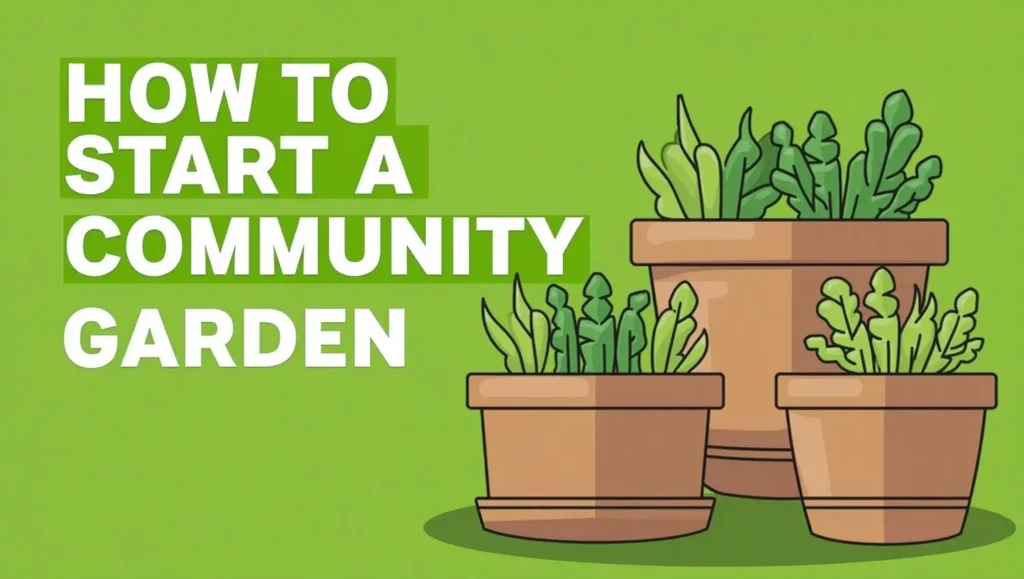How to Start a Community Garden
Community gardens are more than just spaces for growing fruits, vegetables, and flowers—they bring people together, encourage healthy living, and transform unused plots of land into vibrant, productive green spaces. Starting one may seem challenging, but with the right steps, you can create a flourishing garden that benefits your neighborhood for years to come.
🌱 Why Start a Community Garden?
Before diving into the process, it’s important to understand the benefits:
- Provides fresh, healthy produce for local families.
- Builds a sense of community and teamwork.
- Encourages sustainable living and environmental awareness.
- Creates a safe, shared outdoor space for all ages.
- Offers educational opportunities for children and adults alike.
1. Gather Support and Build a Team
A community garden thrives when multiple people are involved. Start by:
- Talking to neighbors, local organizations, or schools about the idea.
- Hosting an interest meeting to discuss goals and roles.
- Forming a small committee to oversee planning, fundraising, and maintenance.
💡 Tip: A strong core team makes it easier to share responsibilities.
2. Find the Right Location
Location is key to success. Look for:
- Vacant lots, schoolyards, or unused public land.
- A spot that gets at least 6–8 hours of sunlight daily.
- Access to clean water.
- Safe, easy-to-reach areas for participants.
Check with local authorities about land-use permissions and possible leases.
3. Plan and Design the Garden
Work with your team to design a garden layout that fits your community’s needs:
- Decide on the type: individual plots, shared beds, or a mix.
- Plan for paths, composting areas, and tool storage.
- Include seating areas for rest and community gatherings.
- Choose plants that are suitable for the local climate and soil.
4. Secure Funding and Resources
Starting a garden requires tools, seeds, soil, and more. Options include:
- Community fundraisers and donation drives.
- Grants from nonprofits or local government programs.
- Sponsorships from local businesses.
- Asking neighbors to donate tools, seeds, or labor.
5. Prepare the Land
Once you have approval and resources:
- Clear debris, weeds, or trash from the site.
- Test and improve soil quality with compost and organic matter.
- Build raised beds if the soil is poor.
- Set up fencing to protect against animals.
6. Organize Rules and Responsibilities
To keep things fair and sustainable:
- Create guidelines for plot assignments, watering schedules, and shared responsibilities.
- Set clear expectations for participation, cleanup, and harvest sharing.
- Decide how conflicts will be resolved.
7. Plant and Maintain the Garden
Now comes the exciting part!
- Start with easy-to-grow crops like tomatoes, lettuce, beans, or herbs.
- Encourage organic methods—composting, natural pest control, and water conservation.
- Hold regular workdays where everyone helps with planting, weeding, and watering.
8. Build Community Engagement
Make the garden a lively hub for everyone:
- Host workshops on gardening, cooking, or sustainability.
- Organize seasonal events like harvest festivals or seed swaps.
- Involve children with fun learning activities.
- Share produce with local food banks or senior centers.
9. Keep It Sustainable
A community garden should be built to last. Maintain momentum by:
- Reviewing goals and rules each season.
- Recruiting new members regularly.
- Documenting progress with photos and stories to inspire others.
- Rotating leadership roles to keep energy fresh.
Final Thoughts
Starting a community garden takes planning, patience, and teamwork, but the rewards are priceless. From fresh produce to stronger community bonds, a shared green space enriches lives in countless ways. With small, consistent steps, you can turn an empty lot into a thriving hub of growth, learning, and connection.
So, gather your neighbors, grab some seeds, and start planting the roots of a stronger community today!

